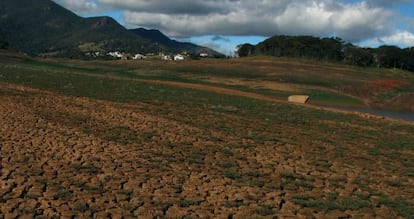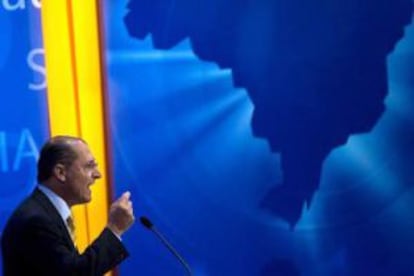Worst drought in 80 years forces São Paulo to begin water restrictions
Authorities finally admit that pressure has been lower for months, despite early denials

São Paulo has begun water restrictions after a year-long drought that is being described as the worst in the last 80 years.
On Wednesday, recently re-elected state governor Geraldo Alckmin, of Brazil’s Social Democrats (PSDB), and the new head of water utility Sabesp, Jerson Kelman, admitted for the first time that homes were already getting less water because the pressure is lower.
They also warned that the situation was critical and would likely only get worse.
Up until now, the government’s strategy had been to categorically deny the existence of restrictions despite complaints by hundreds of residents about hours-long supply cuts that began months ago.
“There is no shortage of water. There will be no water scarcity in São Paulo,” Alckmin stated in October, in the middle of his campaign run. Alckmin, whose PSDB opposes the ruling Workers’ Party, easily sailed to a fourth term in office.
The head of the water utility is asking citizens to pray to São Pedro, the patron saint of rain
Meanwhile, Sabesp president Kelman, who has pledged greater transparency at the joint public-private utility, cautioned that if the situation remained unchanged, there would be supply cuts every other day in addition to the lower pressure.
“It could come down to that. Let’s hope not,” said the head of a supplier that serves a super-city of 12 million residents and parts of the surrounding state.
Kelman also announced that the lower pressure would likely be felt for longer periods of time.
“We have to prepare for the worst,” he said.
“The worst” will ultimately be determined by the amount of rainfall, but authorities fear that the Cantareira System, a series of reservoirs that supplies the city and 67 other municipalities, could dry up entirely.
Until now, the undercover rationing had been passed off as “maintenance work.”
Several experts said that the lower pressure and flow were already affecting over 1,200 neighborhoods in 37 of the state’s cities, including the capital.
On Ipiranga Avenue, in downtown São Paulo, some neighborhood associations were already alerting residents about the water conservation drive.

“We hereby inform all residents that Sabesp’s water restrictions take effect between 6pm and 7am. As a result, water pressure is insufficient to fill up the reserves,” reads one sign.
The restrictions come on the back of a legal decision canceling sanctions against customers whose water consumption exceeds 20 percent of the average. Although the judge did not disagree with the sanctions, she demanded that the governor officially decree a state of water restriction before handing out fines.
Despite the intense tropical storms recorded last summer, the water level at five of the state’s six reservoirs continues to drop because the rain is not falling in the higher areas where the water can flow down into the man-made deposits.
The head of Sabesp is now asking citizens to pray to São Pedro, the patron saint of rain, and ask him for better aim.
Tu suscripción se está usando en otro dispositivo
¿Quieres añadir otro usuario a tu suscripción?
Si continúas leyendo en este dispositivo, no se podrá leer en el otro.
FlechaTu suscripción se está usando en otro dispositivo y solo puedes acceder a EL PAÍS desde un dispositivo a la vez.
Si quieres compartir tu cuenta, cambia tu suscripción a la modalidad Premium, así podrás añadir otro usuario. Cada uno accederá con su propia cuenta de email, lo que os permitirá personalizar vuestra experiencia en EL PAÍS.
¿Tienes una suscripción de empresa? Accede aquí para contratar más cuentas.
En el caso de no saber quién está usando tu cuenta, te recomendamos cambiar tu contraseña aquí.
Si decides continuar compartiendo tu cuenta, este mensaje se mostrará en tu dispositivo y en el de la otra persona que está usando tu cuenta de forma indefinida, afectando a tu experiencia de lectura. Puedes consultar aquí los términos y condiciones de la suscripción digital.
Últimas noticias
Most viewed
- Pablo Escobar’s hippos: A serious environmental problem, 40 years on
- Why we lost the habit of sleeping in two segments and how that changed our sense of time
- Charles Dubouloz, mountaineering star, retires at 36 with a farewell tour inspired by Walter Bonatti
- Reinhard Genzel, Nobel laureate in physics: ‘One-minute videos will never give you the truth’
- The Florida Keys tourist paradise is besieged by immigration agents: ‘We’ve never seen anything like this’









































